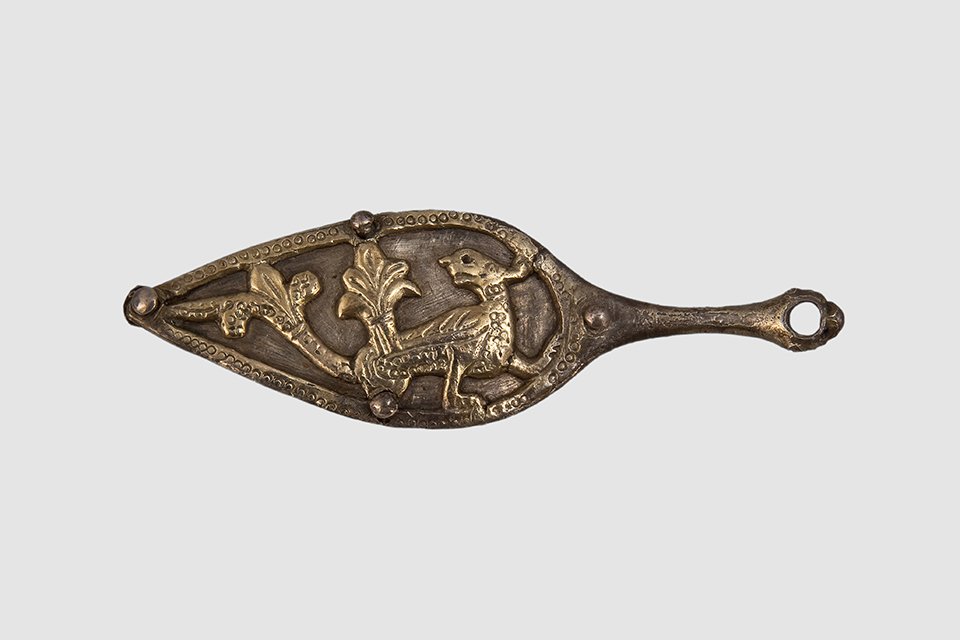The images on the drop-shaped fasteners are especially interesting. One of those seemingly has a mighty lion with a lush mane protruding from the plane. One of beast’s paws is barely marked with relief, the body is made by high relief, and the head and neck already have a sculptural volume. The figure is freed from the restrictive framework, gaining life and expressiveness.
On the second clasp the image is made with low relief and impresses primarily with the strange appearance of a bipedal creature with wings and a long tail which ends with palmettes. A curly comb could be seen on the long-nosed head. Such an image corresponds to the medieval idea of the fantastic basilisk with the body of a rooster and the tail of a snake. It was in the form of a basilisk that the devil was depicted, whom Christ defeats. Thus, the combination of the images of the basilisk and the lion should obviously symbolize victory over the devil.
However, it should be noted that in medieval symbolism, the same animal could have opposite characteristics. According to Blessed Augustine, the same thing can mean different things, and the lion can mean both the Lord, because "the lion of the tribe of Judah won," and the devil, because "he defeated the lion and the dragon."
Perhaps the presence of several belts in one burial had a symbolic meaning. The belt played an important role in the ritual of initiation into knighthood in Europe. It testified to the military prowess of the nomads. Among the inventory of the Chinhul mound there were objects of various cultural traditions, it is likely that the precious belts could testify to the involvement of their owner in the customs of the West and traditions of the East.
en









